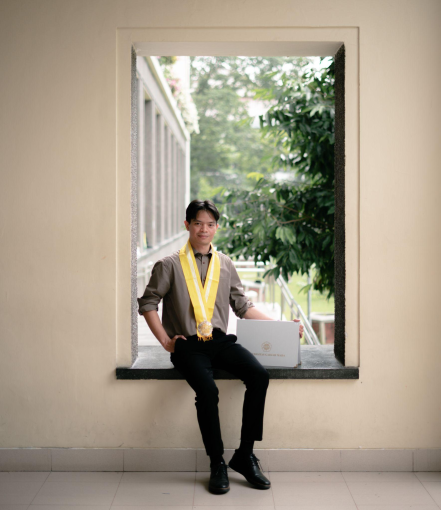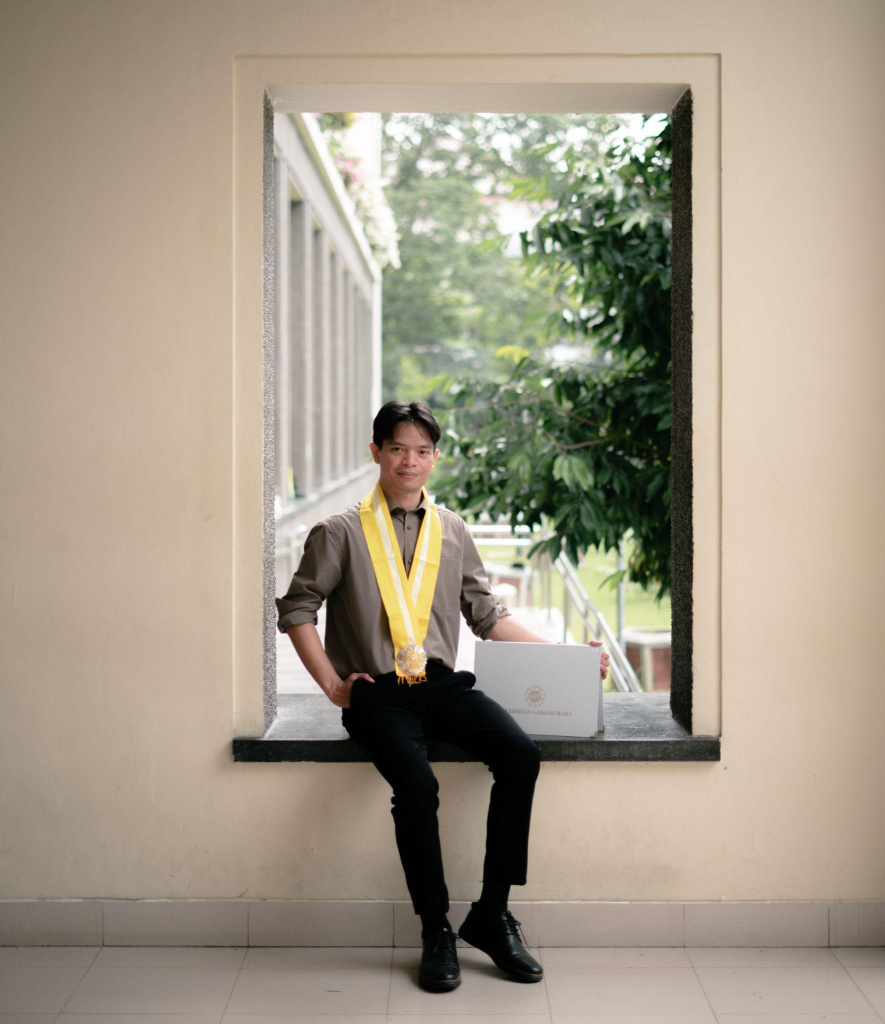

Jeremia Frandy Apitalau, a graduate student in the Biomedical Engineering Master Program, is currently completing his thesis research on a strategic topic exploring the potential of drug delivery in drug-eluting stents (DES). His research, titled “Design of Controlled Release Drug-Eluting Stent with Multi-Layer Chitosan and Curcumin”, aims to address a major challenge in the clinical application of drug-coated stents—namely, the initial burst release that can potentially increase the risk of restenosis (re-narrowing of blood vessels).
Jeremia explains several commercial DES products still face limitations in the early drug-release phase. An overly rapid initial burst release can cause harmful clinical side effects. He designed a multi-layer coating approach to overcome this, using chitosan crosslinked with genipin as the main polymer, and curcumin as the active agent being tested.
“This layered strategy is designed to produce a more controlled and stable drug-release profile,” Jeremia explained.
The coating process was carried out using an ultrasonic coating technique, with variations in forward speed on a rotary drive (7.0, 8.0, and 9.0 mm/s). The concentration of curcumin was measured using a UV-Vis spectrophotometry method, which was validated and proven to be accurate. The results showed that coating thickness varied significantly with speed, although curcumin release did not show significant differences across the variables.
The coating surface exhibited notable morphological changes at the speed of 9.0 mm/s. Release profile testing revealed that the Peppas-Sahlin model best fit the empirical data, indicating that Fickian diffusion dominated up to day 6 or 7, before gradually being replaced by a polymer relaxation mechanism. Meanwhile, the Korsmeyer-Peppas model indicated a super case II transport mechanism, involving release based on relaxation or erosion.
Interestingly, the zero-order model also used in the analysis showed that the stent design could provide a constant and controlled drug release—without the undesired initial burst release.
Jeremia hopes his research can make a meaningful contribution to the future development of stent technology. “I hope the Biomedical Engineering program continues to grow and significantly contribute to the advancement of medical innovation in Indonesia,” he stated.
This research is expected to pave the way for the development of a safer and more effective next-generation drug-eluting stent to treat cardiovascular diseases in Indonesia.
This activity aligns with SDG 3 on Good Health and Well-being, and SDG 4 on Quality Education.
Writer: Arni W
Editors: Rini Dharmasiti, Jeremia
